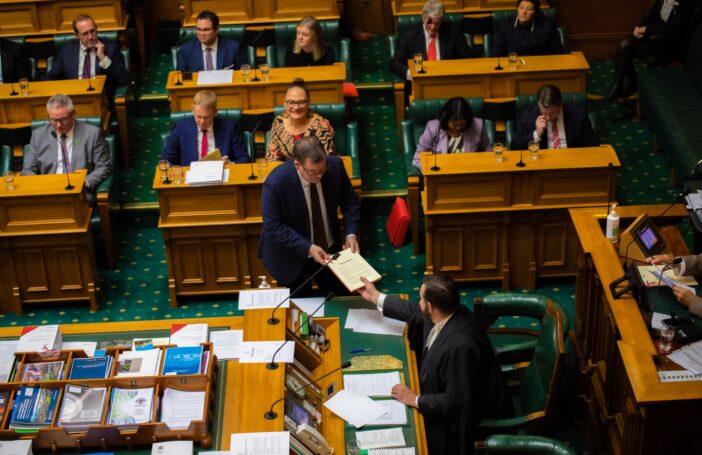In the lead-up to the New Zealand government budget on 30 May, there was genuine uncertainty about what would happen to aid. On the one hand, the country’s centre-right government was slashing spending across the board to pay for tax cuts. On the other hand, there was New Zealand’s Foreign Minister Winston Peters.
Peters, as Australian readers will recall, leads a party called New Zealand First, and if you listened to his rhetoric on the campaign trail you would assume he hates the outside world. Yet as foreign ministers in previous governments go he’s actually been quite good for aid, using the leverage that comes with being a necessary partner in a coalition to get spending increased.
Until budget day it was completely unclear whether across-the-board cuts would include aid, or whether Peters would stand firm and protect the budget.
New Zealand’s aid transparency has improved recently. But the improvements are all to do with project details. For reasons that completely evade me, unlike Australia, New Zealand does not simply come out on budget day and say what aid spending will be.
As a result, every year I devote about five hours to carefully navigating sprawling Treasury spreadsheets and labyrinthine budget estimates files, with the aim of divining very basic information on aid spending. (Anything more detailed such as country or sector allocations is hidden from the prying eyes of taxpayers like me.)
What did I find this year? The simple story is that Winston Peters lost: the 2024 budget was a bad one for New Zealand aid. By the end of 2026-27 our annual aid spend will have fallen below NZD1 billion. And our aid to Gross National Income (GNI) ratio will be a pitiful 0.2%.
Before I get into the grim details, I need to make a few data-related points.
The first is that New Zealand aid is budgeted for in three-year tranches – so called triennia. This is good aid practice, and in theory I could reflect this by reporting on triennial totals. But in reality aid budgets can, and indeed are, changed within triennia. Also, within government, aid spending is still monitored on an annual basis, and it’s also possible, as an outside observer, to track annual spending. What’s more, the aid-to-GNI ratio – the standard international metric of aid generosity – is calculated annually. For these reasons, all of my reporting is annualised. I have marked the end of triennial periods on my charts below with shaded sections.
Also, in another triumph for transparency, New Zealand’s aid figures include aid to Cook Islands even though it is no longer ODA-eligible. I cannot extract spending on the Cooks from my numbers here, so all numbers include it, although, fortunately, the material impact of this is very minor.
Finally, although overheads are part of the overall aid budget, I have had to estimate them for 2025-26 and 2026-27, and include these estimates in my calculated total aid values for these years. Why? Because I couldn’t find information on anticipated overheads for these years (presumably it’s a state secret). So I’ve assumed that overheads will continue as 9% of non-overheads spending, which is what they are budgeted to be in 2024-25. Luckily, this is a pretty safe assumption.
With all that out of the way, here are the trends:


By 2026-27, our aid generosity as measured by the aid-to-GNI ratio will probably be worse than that of much poorer countries like Lithuania and Slovenia, and worse even than that of notorious aid tight-fists the United States. New Zealand’s aid generosity will only be slightly better than Australia’s.
How will the decline play out in practice?
The first and least materially important component of the cuts will be cuts to overheads as the rest of the aid budget falls.
The second is that the government plans to make – significant but not gigantic – aid cuts outside of the Southeast Asia and the Pacific (see page 48 here). Quite what this means, and whether the cuts will fall upon New Zealand’s multilateral contributions or bilateral programmes is impossible to discern from existing information. Like Australia, New Zealand already underfunds multilaterals and further cuts in this area would only add to the impression that we are a global free rider. But it might also be hard to find sufficient savings in already small bilateral budgets elsewhere.
The third change is that much of the substantial increase in climate aid that occurred under the previous government will be reversed.
This third change is the most significant, and also the most complex. Long-term projections produced by the previous government hadn’t included sustaining the climate aid increase either, although it’s a reasonably safe bet that it would have been sustained, particularly if the government had been a coalition involving the Green Party.
It’s also possible that the planned cuts to climate aid will not occur even under the current National-led coalition. It would be embarrassing for the Prime Minister to front up to the next UNFCCC Conference of the Parties meeting and say, “Um, gosh, yes, we’re being pretty hopeless on our domestic emissions, and we’re cutting climate finance too.” So it’s possible that an announcement will be made at a future COP meeting and that our climate aid, along with overall aid, will rise again.
Or not. There are alternatives (like closing other aid projects and using the savings to fund new climate projects, or creative accounting), but perhaps the New Zealand aid picture won’t look so bad in a couple of years’ time. We’ll see.
For now though, going by the numbers that have been put in the public domain, the shameful story is that — despite an abundance of need globally, and despite New Zealand’s increasing wealth — its aid is set to fall.
Download the data.





Thank you Kevin. I agree: it’s sad to see NZ in this part of the league table.
Thanks for these close comments, which I have not seen elsewhere. I am sad the NZ is dropping into the non-contributing nations of the world. It is shameful selfishness.